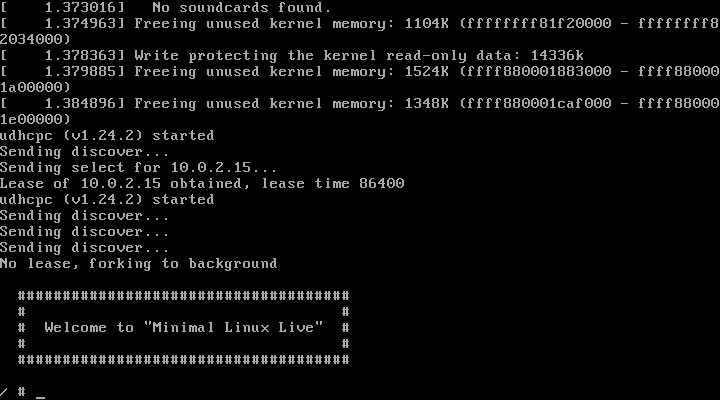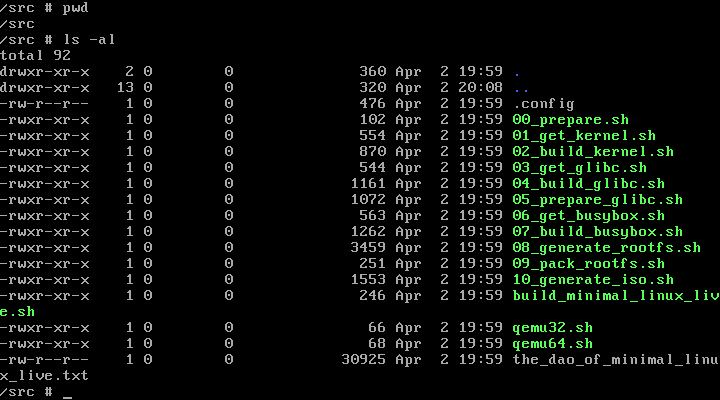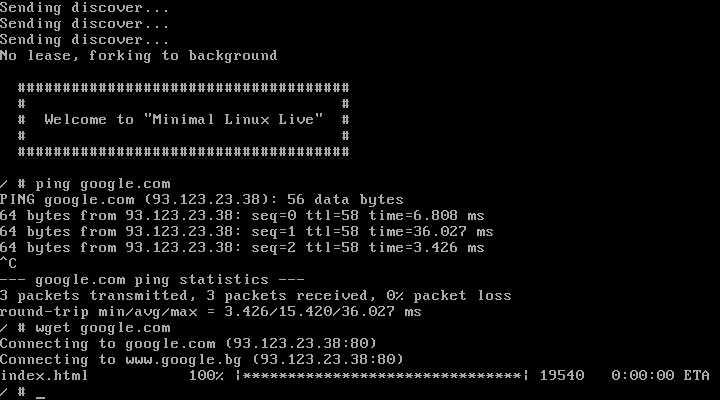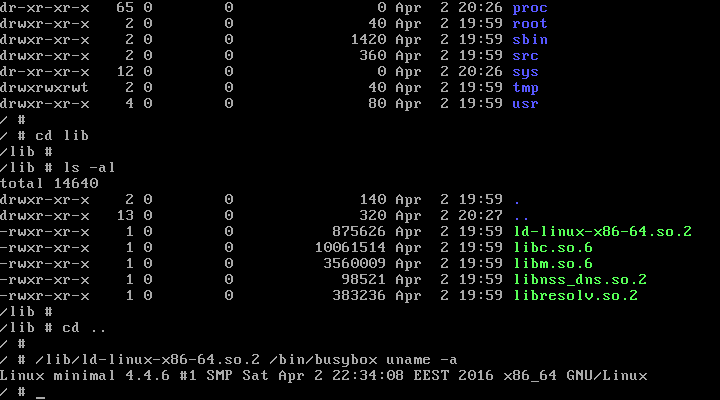Home
Minimal Linux Live is a set of Linux shell scripts which automatically build minimalistic Live
Linux OS with basic network support via DHCP. The generated operating system is based on
Linux kernel,
GNU C library and
BusyBox. All necessary source codes are automatically
downloaded and all build operations are fully encapsulated in the scripts.
If you want to build your own Minimal Linux Live ISO image file, all you need to do is the following:
- Get the latest scripts from the download section.
- Extract the scripts to some folder. Note that even though the scripts are small in size, you need ~2GB free disk space for the actual build process.
-
Just for convenience, make sure that all scripts are executable (
chmod +x *.sh). If you decide to skip this step you can still run the scripts like this (example):sh build_minimal_linux_live.sh -
Depending on which Linux OS you are using, there might be one or more (or none, or even more) build dependencies that you
need to resolve before you start the build process. If you work with Ubuntu,
the following commands should resolve all necessary build dependencies:
-
sudo apt-get install wget -
sudo apt-get install make -
sudo apt-get install gawk -
sudo apt-get install gcc -
sudo apt-get install bc -
sudo apt-get install syslinux -
sudo apt-get install genisoimage
-
-
Execute the script
build_minimal_linux_live.shand wait. If you have resolved all build dependencies, the whole process should take less than 30 minutes on a modern computer. If the build fails for some reason, most probably there are unresolved build dependencies. Several users reported that thebuild-essentialpackage resolves all unexpected build dependencies for Ubuntu. If you are using Linux Mint try to install the packageg++and if you still have troubles then try thebuild-essentialpackage. On Fedora you might need the static 'glibc' packageglibc-static. On Arch Linux and Debian you might need to locateisolinux.binand copy it to/usr/lib/syslinux/isolinux.bin.Please have in mind that the build dependencies can vary a lot depending on the Linux OS which you use and the software which you have already installed.If you still have troubles then examine the failure message and google it. If you are unable to find solution, then you can ask someone more experienced Linux guru (if you know any) or as alternative you can contact me. Please, make sure that you have researched your problem in advance before you send me your question. -
When the scripts finish their job you will find newly generated
minimal_linux_live.isoin the same folder where you executed the scripts. You can burn the ISO image file on CD/DVD, install it on USB flash drive via Universal USB Installer, or run it directly via PC emulator like VirtualBox. Minimal Linux Live requires at least 64MB RAM, otherwise the boot process most probably will hang.
The generated ISO image file contains Linux kernel compiled with default options, GNU C library compiled with default options,
BusyBox compiled with default options and quite simple initramfs. This means that you don't get Windows support out of the box,
nor you get any fancy desktop environment. All you get is a simple shell console which supports all BusyBox applets and... well,
that's all. This is why it's called "minimal".
The good news is that the build scripts are very small in size and simple to understand. You can easily learn from the scripts
and later modify them to include more stuff (I encourage you to do so). After you learn the basics you will have all the necessary
tools and skills to create your own fully functional Linux based operating system. Entirely from scratch!
The tutorial provides more details about the inner structure
of the scripts and the overall build process. I encourage you to go through this document when you have the time. The same tutorial
document is automatically included in the generated ISO image, so you can always refer to it.
Below you can find several screenshots which show what the environment looks like when you boot your newly generated
Minimal Linux Live OS.
Copyright © 2014 - 2016
|
Minimal Linux Live





